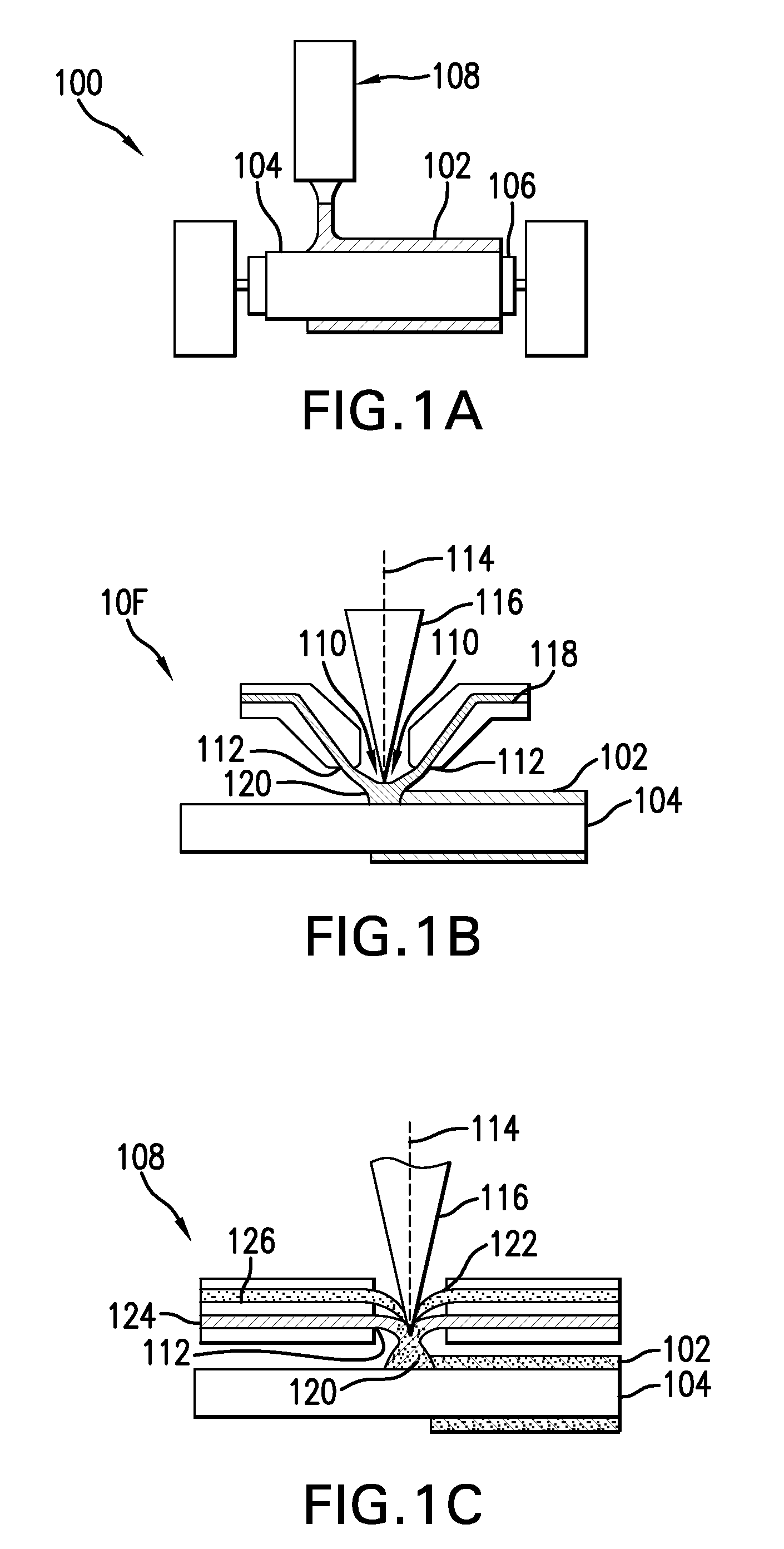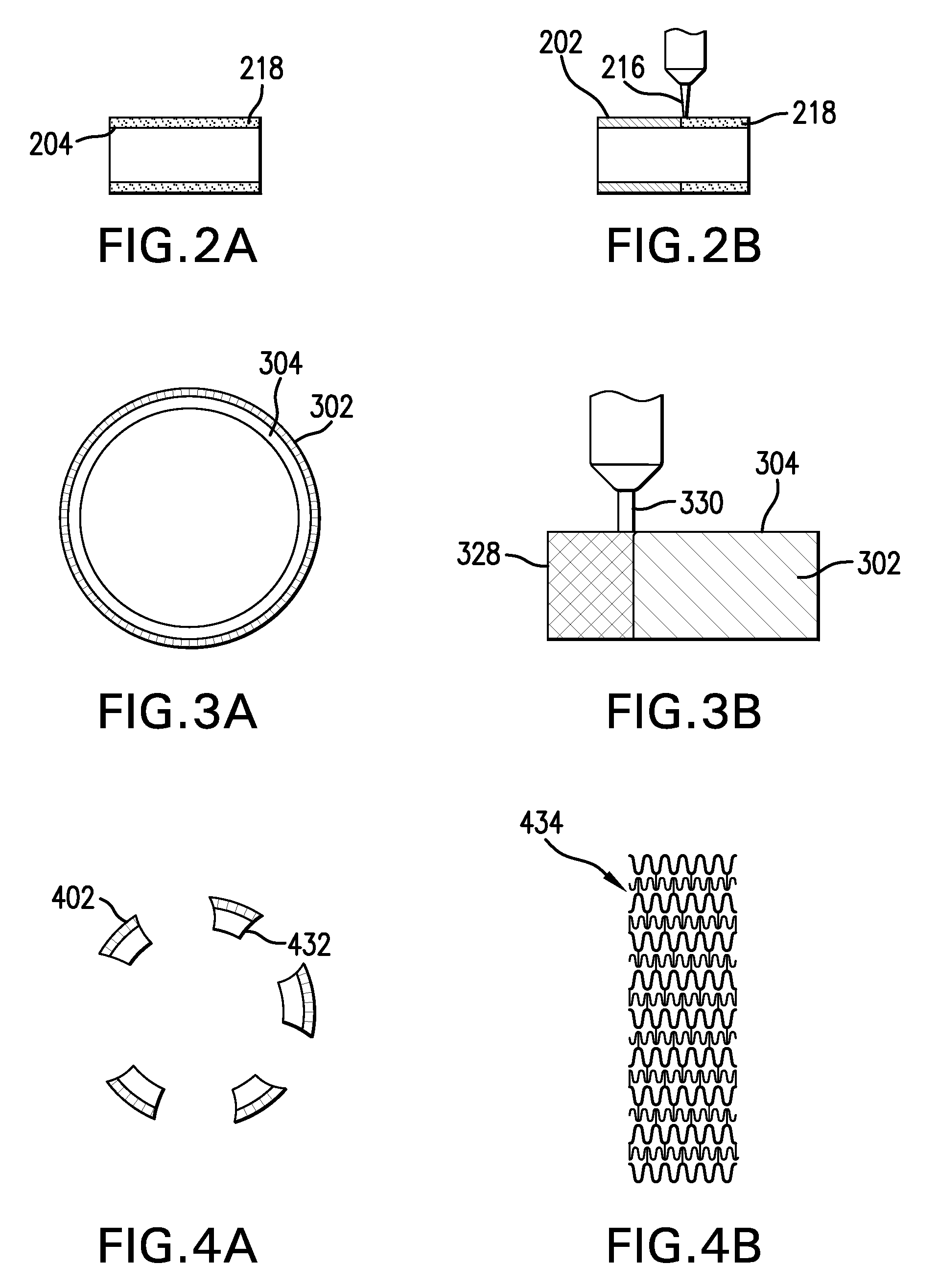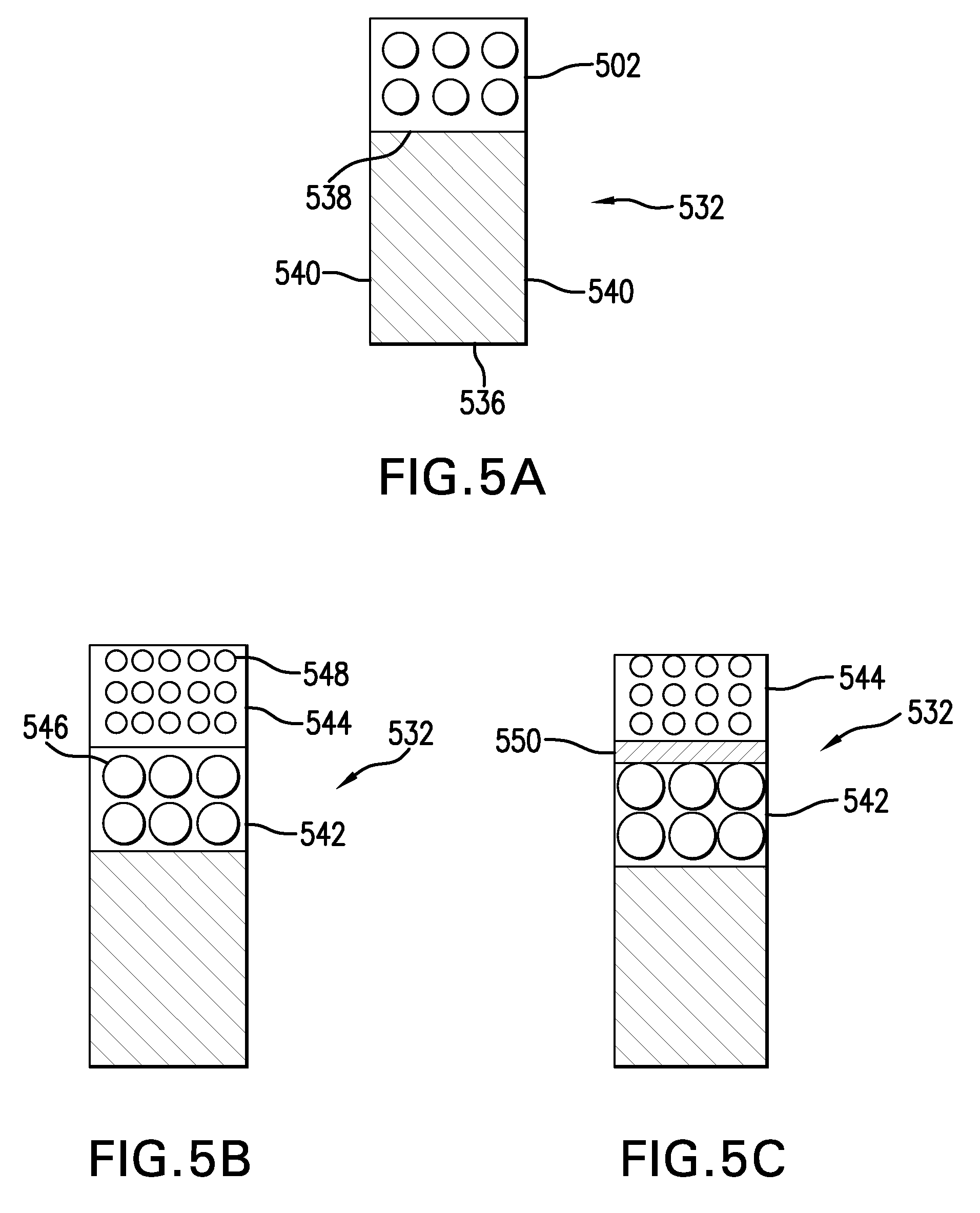Medical device coating by laser cladding
a technology of laser cladding and medical devices, applied in the direction of soldering media, magnetic materials, packaged goods types, etc., can solve the problems of reducing the accuracy of the dose delivered at the target site, unwanted webbing, and inaccuracy deposition of the therapeutic agen
- Summary
- Abstract
- Description
- Claims
- Application Information
AI Technical Summary
Benefits of technology
Problems solved by technology
Method used
Image
Examples
Embodiment Construction
[0023]Conventional laser cladding processes have been used for hard-facing (e.g., applying a layer of harder material (e.g., tungsten carbide) onto a softer base layer of material (e.g., stainless steel)). These conventional processes contemplate the use of one or more homogenous hard-faced layer(s), where pores and cracks in the hard-faced layer are undesirable. Laser cladding processes have been utilized for hard-facing new components during production and restoring worn-down surfaces of existing components.
[0024]For example, as discussed in M. F. Schneider, “Laser Cladding” (Ph. D. Thesis, University of Twente, Enschede, The Netherlands, 1998), pages 1-181, laser cladding processes have been used in industrial applications to hard-face and refurbish gas turbine blades and diesel engine exhaust valves. In addition, as discussed in U.S. Pat. No. 6,122,564 to Koch, which issued on Sep. 19, 2000, laser cladding has also been proposed for use in general industrial processes for improv...
PUM
| Property | Measurement | Unit |
|---|---|---|
| wavelengths | aaaaa | aaaaa |
| wavelengths | aaaaa | aaaaa |
| wavelength | aaaaa | aaaaa |
Abstract
Description
Claims
Application Information
 Login to View More
Login to View More - R&D
- Intellectual Property
- Life Sciences
- Materials
- Tech Scout
- Unparalleled Data Quality
- Higher Quality Content
- 60% Fewer Hallucinations
Browse by: Latest US Patents, China's latest patents, Technical Efficacy Thesaurus, Application Domain, Technology Topic, Popular Technical Reports.
© 2025 PatSnap. All rights reserved.Legal|Privacy policy|Modern Slavery Act Transparency Statement|Sitemap|About US| Contact US: help@patsnap.com



